If you thought that The Monkees’ television show bore a resemblance to The Beatles’ film A Hard Day’s Night then you’d be right. American filmmakers Bert Schneider and Bob Rafelson had seen the film and wanted to create a series with the same sort of feel, only this time it would be about a fictional group, not a real one.
Originally called ‘The Monkeys’ for the pilot episode, the soon-to-be stars were recruited via advertisements for ‘four insane boys’ in The Hollywood Reporter and Daily Variety in September 1965. Approximately 400 people turned up to the auditions which were then whittled down to 14 for a screen test. An audience was used to test reactions to them and from this, the final line up was chosen: Davy, Peter, Michael and Micky.
Davy Jones was actually English; born in Manchester in 1945 he once acted in that most British of institutions, Coronation Street, playing Ena Sharples’ grandson. His career had taken a slightly different slant to begin with, however; he’d once harboured ambitions to become a jockey. That didn’t last long though - after he’d secured the role of the Artful Dodger in a production of Oliver! in the West End he then moved with the show to Broadway and received a Tony nomination.
He went on The Ed Sullivan Show as part of the cast in February 1964 and also got to witness the hysteria of the girls in the audience watching an appearance from The Beatles. It got him thinking that he would quite like to be the recipient of that kind of attention and he soon after signed contracts with Screen Gems, a television subsidiary of Columbia Pictures (which got him his first small screen roles) and Colpix Records (also owned by Columbia). He released a single and an album in the U.S. in 1965, with the album also going on sale in the UK two years later. When Screen Gems started production on The Monkees Jones was put forward for an audition.
Micky Dolenz (whose real name is actually ‘George Michael’ Dolenz) was also born in 1945 but across the pond in Los Angeles. He started in showbiz as a child and continued to appear in various television shows whilst attending school. He was studying at an LA college when his agent told him about The Monkees’ audition and he was then offered the role of singer and drummer, despite not knowing how to drum. He started off by miming the drumming action needed for the songs although in time he actually did take lessons and learnt how to play for real.
Folk singer Peter Tork (his real surname was Thorkelson) was born in Washington D.C. in 1942. Tork only auditioned for The Monkees after being recommended by his friend, the musician Stephen Stills, who had himself failed to get one of the four starring parts. Tork played guitar, keyboards, banjo, harpsichord as well as other instruments as well as co-writing the second series’ end of show song, For Pete’s Sake.
The final member of the line-up was Mike Nesmith. Born in Houston in 1945 he was not the only family member to come to the public eye; his mother invented Liquid Paper (more commonly known as Tip-Ex in the UK), created the Liquid Paper Corporation and sold it to Gilette in 1979 for nearly $50 million dollars. Nesmith took an active interest in both singing and drama whilst at high school and also took part in the Dallas Theater Center teen programme where he acted in a number of plays. Not a motivated academic student, he didn’t graduate from school, instead enrolling in the US Air Force at 18. During this time he studied and received his General Education Development certificate and in 1962 was honourably discharged from the Air Force so that he could enrol in college. Here he began collaborating with musician and songwriter John London before moving to LA to pursue his own musical career.
He began to sing in folk clubs and was offered a publishing deal for his own song writing and it was while this was in place he was made aware of the hunt for a new television band. Following a successful audition Nesmith was given the part of Mike, the guitar player. The Monkees was born.
Schneider and Rafelson had very specific ideas for how they wanted the comedy show to be filmed. They wanted it to be exciting and experimental – using techniques such as breaking the fourth wall, improvisation of the script and fast moving camera shots and cuts – which were more reflective of movies than current television methods. They also added animation (there was a scene in the first episode where Davy met a girl he was attracted to and stars shone from both their eyes), speeded up the film to add humour to chase scenes and occasionally used title screens to explain plot points, as in silent movies.
The band was taught how to perform improvisational comedy and each member was given a distinct personality that they adopted for the show. Jones was the cute one (although all four were cute in their own wacky way really), Nesmith intelligent and serious, Dolenz was the clown and Tork the not so bright one – although in reality, it was Tork who was the intellectual one. Within the ‘trying to make it as a band’ storyline of each episode there would also be a musical short, with the boys appearing in a stand-alone video for one of their songs.
The initial audience reactions to the pilot were underwhelming, although this may well have been purely from the production values; the first episode was shot on an extremely low budget and this was readily apparent, even down to the lack of wardrobe provision for the four stars. Rafelson and Schneider tried again, this time showing the viewers the group’s screen tests so that their amiable personalities could win them over. This little trick worked and the second screening returned a great response.
The first transmission of The Monkees television show was on September 12th 1966 on NBC. The scripts perfectly showcased the group as fun and spirited, the kind of lads that girls would fancy and boys would want to hang out with. They were definitely written to appeal to a youthful audience; the young people were the unequivocal heroes of the piece whilst adults were portrayed as stuffy, intolerant or villainous. This was also underlined in the programme’s theme song (Theme From) The Monkees, which included the line ‘We’re the young generation and we’ve got something to say’. Added to all this was a huge element of slapstick – for example, the boys often dressed up in and pretended to be other people but the disguises could simply be a large moustache and still nobody recognised them.
The improvisational nature of the show often meant that the plot was wound up in less than the allotted amount of time allowed for broadcast, so the producers added in little extras, such as interviews with the group or clips from their original screen tests.
The show took off in a big way, earning two Emmy awards in 1967 for Outstanding Comedy Series and Outstanding Directorial Achievement in Comedy. It ran for two seasons, with 58 episodes in all and finished in March 1968. Despite its success it was cancelled after this as the group and NBC couldn’t agree on which direction it should go forward in, although three longer TV specials were still contracted. One was filmed and broadcast in 1969 but Peter Tork quit the band before it was due to go on air and the second two were never made.
The television programme wasn’t the only thing The Monkees were famous for, of course. Initially, the boys had to spend more time filming the show than recording together as an actual band. Over the course of time they were able to ensure they were responsible for all the music written and performed using the band name. They then carried on recording and releasing songs after the show finished, up until the band split up in 1971. Songs that have remained popular to this day are Daydream Believer, Last Train to Clarksville, Pleasant Valley Sunday and the sing-a-long I’m a Believer – this last one was composed by Neil Diamond and also covered by Vic Reeves, Bob Mortimer and EMF in 1995, as well as several hundred other people. It may sound unbelievable now, but in 1967 they sold more records than both The Rolling Stones and The Beatles combined – unfortunately, despite their on screen chemistry, the public perception of them as a ‘fake band’ never went away and they could never properly capitalise on their early popularity.
So now we’ve reminisced about The Monkees’ television show you know you want to finish off with the song…Off we go: ’Here we come, walking down the street. We get the funniest looks from everyone we meet…Hey, hey, we’re The Monkees, people say we monkey around. But we’re too busy singing, to put anybody down…’




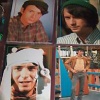
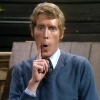
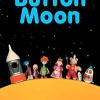
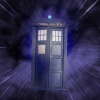
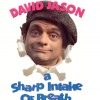
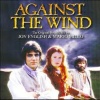
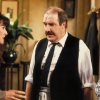
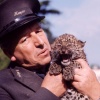
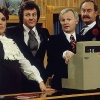
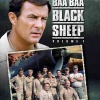
Do You Remember The Monkees (TV Show)?
Do You Remember The Monkees (TV Show)?